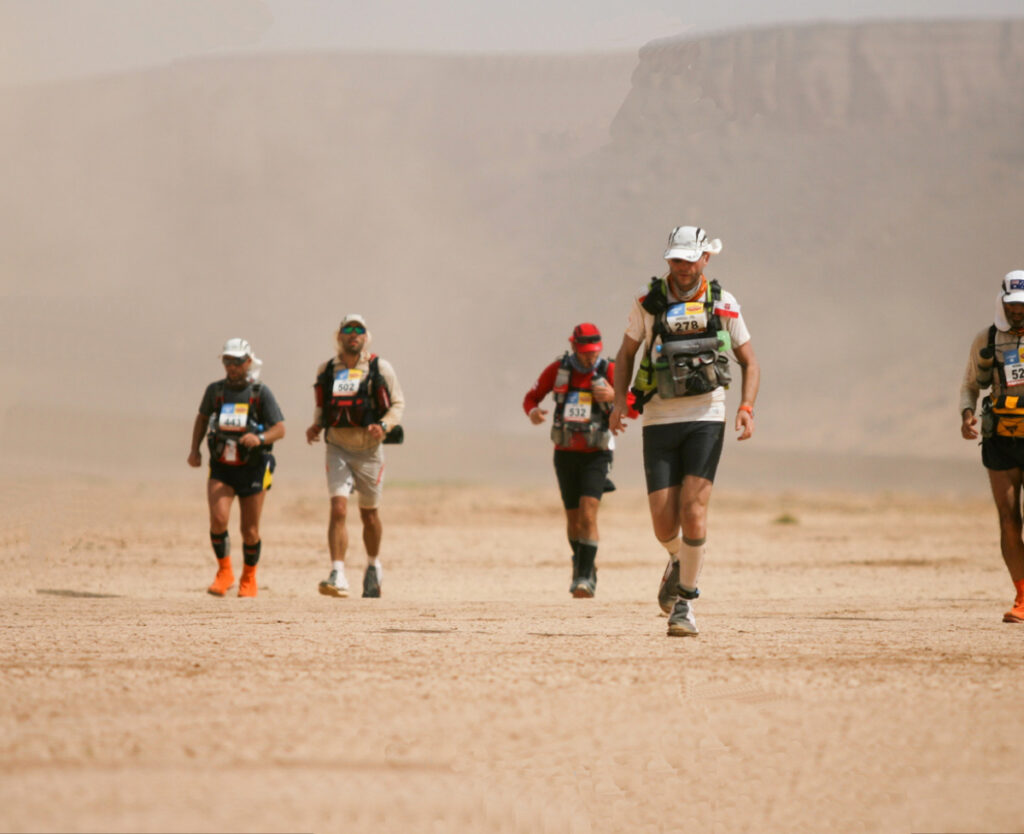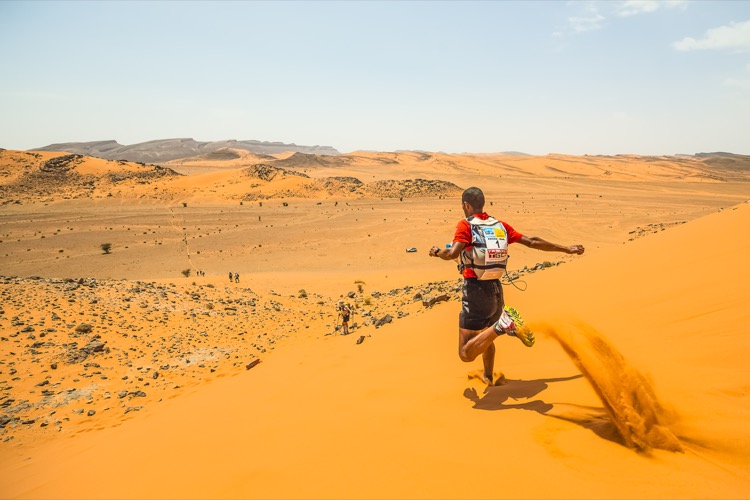Conquer the Sahara Marathon 2024: Your Step-by-Step Guide

- By Karim Hassan
- Reviewed by Sophia Rose
- February 22, 2024
- Adventure
Think about how tough it is to run a marathon. Now, imagine doing that in really hot weather, on sand that keeps moving under your feet, and carrying everything you need on your back.
This is what you face in the Sahara Marathon (Marathon des Sables), which people often call the toughest foot race on Earth.
In this guide, I’ll take you through everything you need to know about this incredible event, from the harsh desert conditions to the friendship among runners. Let’s get started!
Table Of Content
Understanding the Sahara Marathon
What is the Sahara Marathon?
The Sahara Marathon, also known as the Marathon des Sables, is a tiring multi-day ultramarathon that takes place in the Sahara Desert of Ouarzazate, Morocco.
This is a solidarity race for the refugee children of Western Sahara, and this year’s race is happening on Wednesday, February 28, 2024, in the Sahrawi refugee camps in Tindouf – Algeria. The available race distances are as follows: the Marathon (42km), the Half Marathon (21km), the 10km and the 5km.
Participants are required to be self-sufficient, carrying all their supplies, including food and sleeping gear, with only water and tents provided by the organizers. All these races will happen on one path that goes from Aaiun to Auserd and ends at Smara camps. This is where all the different races finish.
Why is the Marathon des Sables considered the toughest foot race?
The Sahara Marathon is often dubbed the toughest foot race on Earth due to the extreme conditions participants must endure. The scorching heat, which can reach up to 50°C (122°F), the shifting dunes, and the requirement for self-sufficiency make it an extraordinary challenge.

Runners must not only cover vast distances but also navigate difficult terrain, manage their hydration and nutrition, and deal with the physical and mental strain of the harsh desert environment.
The scale of the Sahara Marathon: Over 1200 entrants each year
The Marathon des Sables has grown significantly since its inception. Today, it attracts over 1200 entrants each year, from elite athletes to adventure enthusiasts.

Despite the demanding conditions, the race has a surprisingly high finish rate, a testament to the determination and tenacity of its participants. The Sahara Marathon is more than just a race; it’s a life-changing experience that pushes the boundaries of human endurance.
Preparing for the Marathon des Sables
Physical preparation: Training tips and strategies
Training for the Sahara Marathon is a long-term commitment. It’s recommended to start training at least six months before the race.
Your training should include long-distance running to build endurance, strength training to prepare your body for the weight of the backpack, and heat acclimatization to prepare for desert conditions. Running on sand, where possible, can also be beneficial.
Mental preparation: Building resilience and endurance
The Marathon des Sables is as much a mental challenge as it is a physical one. Building mental resilience is crucial. This can be achieved through practices like meditation, visualization, and positive self-talk. It’s also important to prepare yourself for the isolation and self-sufficiency required during the race.
Essential gear for the Marathon des Sables
The right gear is essential for the Sahara Marathon. This includes lightweight and breathable clothing, a good quality backpack, trail running shoes, gaiters to keep sand out of your shoes, a hat and sunglasses for sun protection, a headlamp for night stages, and a sleeping bag for cold desert nights. You’ll also need to carry all your food for the duration of the race.
Real-life experiences of under-prepared runners
There are numerous accounts of runners who underestimated the Marathon des Sables. Common themes include not training adequately.

Particularly for the heat and sand, not testing their gear beforehand, and not packing enough or the right kind of food. These stories serve as a stark reminder of the importance of thorough preparation for this taxing race.
Navigating the Sahara Marathon
Dealing with the desert conditions
The desert conditions are a major part of the Marathon des Sables challenge. Temperatures can reach up to 50°C during the day and drop to near freezing at night.
Runners must also contend with sandstorms and the ever-shifting dunes. It’s crucial to protect yourself from the sun, wind, and sand, and to manage your body temperature effectively.
Nutrition and hydration strategies during the race
Hydration and nutrition are key to surviving the Marathon des Sables. Runners must carry all their food for the week, so it’s important to choose lightweight, high-energy foods.
Hydration salts can help prevent dehydration, and it’s crucial to drink regularly, even if you don’t feel thirsty. The race organizers provide a certain amount of water each day, and managing this water supply is a critical part of the race strategy.
Post-Marathon Recovery and Reflection
How to recover after the Marathon des Sables
Recovery after the Sahara Marathon is as important as the preparation and the race itself. It’s crucial to give your body time to heal and recover.

This includes proper nutrition to replenish lost nutrients, plenty of rest, and gentle exercises like stretching and walking to aid recovery. It’s also important to listen to your body and seek medical attention if needed.
Reflecting on the Sahara Marathon experience
Reflecting on the Marathon des Sables experience is a personal and often emotional process. It’s a time to look back on the challenges you overcame, the friendships you made, and the incredible journey you undertook. It’s also a time to appreciate your strength and resilience, and to learn from the experience for future adventures.
Planning your next adventure
Once you’ve recovered and reflected on your Sahara Marathon experience, it might be time to start thinking about your next adventure.
Whether it’s another marathon, a different kind of race, or a completely new challenge, the confidence and resilience you gained from the Sahara Marathon will surely help you in your future endeavors.
The difficulties of running the Marathon of Sands
Running the Marathon of Sands is no easy feat. The extreme heat, the challenging terrain, the physical and mental strain – all these factors make it one of the toughest foot races on Earth.


But despite, or perhaps because of, these difficulties, completing the Sahara Marathon is an achievement of a lifetime, a testament to the strength and endurance of the human spirit.
Get Ready For a Challenge
Running the Marathon des Sables is a monumental challenge, but with the right preparation and mindset, it’s an achievable one. It’s more than just a race; it’s a testament to human resilience, a celebration of the spirit of adventure, and a journey of self-discovery.
To those considering taking on this incredible challenge, remember that every step, every dune, every bead of sweat is part of your Marathon des Sables story. It’s a story of endurance, of determination, and of the extraordinary things we can achieve when we push our limits.
So, are you ready to write your Sahara Marathon story? The desert awaits. Happy running!
Don’t miss out on the fun, make sure to subscribe to our newsletter and unlock a world of adventure. Book adventurous tours, engage in amazing activities, and be a part of fun-filled events.
